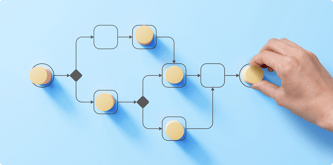How a food safety compliance review benefits your Food service business
Food service providers face a tough challenge when it comes to food safety compliance. They must not only meet the same uncompromising food safety...
Software as a Service (SaaS). A convenient, ready-to-go solution that has a transparent cost and an apparently minimal overhead for your team to implement and start using.
This USP is what has made SaaS such a dominant force in the market in the past ten years, and while I think it’s well deserved in many contexts, my own recent experience of buying and implementing a service desk solution made me think it was worth writing about the drawbacks, and why the value you’re getting from the service should be the critical factor.
As a Head of Customer Excellence, I recently implemented two products in my department, for the same reasons that anyone buys into SaaS: the arduous work has been done for you with a ‘plug and play’ solution.
No development burden, no testing, and you benefit from the years of experience the provider has – hundreds if not thousands of companies have already bought into and contributed to the product.
But my experience wasn’t entirely hassle-free.

Yes, I didn’t have to build either solution, but I did have to dedicate myself full-time to choosing, implementing, testing, training and change management for two months.
I was doing my full-time job on top of a full-time job just to get the solution up and running.
And what’s concerning is that I have years of experience in implementing software for other companies, so I know the process inside out. For someone less experienced who is nonetheless heading up a project like this, it would be even more laborious.
%20(1).jpg?width=634&height=282&name=AdobeStock_487168466_Editorial_Use_Only%20(1)%20(1).jpg)
The challenge is that although in theory, all these parts of the puzzle have been put together for you, your business might use different corner pieces. Everyone has their unique processes and approaches to problems – it's what makes your company unique.
Any training material your Customer Success Manager or Account Manager provides is generic. The account managers I had for both products were helpful and active, but they could only advise on standard procedure – they don’t know my business in the same way and they are not analysts.
This can lead to a very frustrating situation for a customer, in which they’ve tried to implement a SaaS product, but without the help required to get it set-up properly or the vision to generate value, resulting in the dreaded phrase, “It doesn’t work.”
The person in charge gets stuck between trying desperately to understand and fix the problems, while catching all the blame for the unsuccessful implementation, and the business is potentially in a worse position than they started in.
It isn’t anyone’s fault when this happens, it’s an unfortunate situation that arises from a misconception around SaaS. Implementation is still not going to be a matter of flicking a switch and the question of value will often get forgotten.
It might seem like a given that if the product works you will get value from it, but it requires expertise from both inside and outside of your business to realise this value.
%20(1)-png.jpg?width=386&height=217&name=AdobeStock_334134212%20(2)%20(1)-png.jpg)
SaaS doesn’t necessarily provide this, it assumes you have clear goals, a roadmap and metrics for value already well-defined before you come to the table and conversely, many customers assume that these are part of the offered package.
Myself and my team take a different approach, one that you could describe as SwaS, or Software with a Service. It might sound silly, but it nicely encompasses our philosophy: our combination of on-going support, configuration and business analysis is all focused on taking not just the implementation burden away from our customers, but also on driving value from our product.
We start by understanding our customer’s pain points and collaborating on creating clear goals – a vision for what the product will bring to their business, how we can adapt to their strategies and how to manage change.
It’s all about taking this strategic burden from them, while still working closely with them to not lose sight of their unique requirements.

We almost never get it right on the first go, but rather than the failure falling on the customer to fix, it’s our job to continue to iterate on processes, deploying these little and often where possible, based on what works and what doesn’t, and always with the agreed upon goals in mind.
Our configuration, analysis, and development teams are looking not just for fixes, but examining the efficacy of the approach and how to best achieve the customer’s goals.
This isn’t to say that SaaS is bad – the convenience, structure and reliability of it still makes it highly compelling, but it’s worth asking yourself: Do I want more than the tool itself, and what is my vision for using it?
-png.png?width=343&name=AdobeStock_498951095%20(1)-png.png)
Getting value at an operational and strategic level from any tool requires a lot of time, effort and thought. It’s about having the support to not just change how you do something but why.
The hardest part about driving business change can be that you’re trying to open the box with the crowbar inside. External expertise can help you to keep on track, bring focus back to your goals and offer that additional value that drives real change.

Food service providers face a tough challenge when it comes to food safety compliance. They must not only meet the same uncompromising food safety...
So, you want to buy another Software as a Service solution. This might sound like an assumption, but given that spending on SaaS is likely to reach...
Digital transformation has affected businesses across the whole spectrum and one commonality is the speed of digitalisation which has significantly...